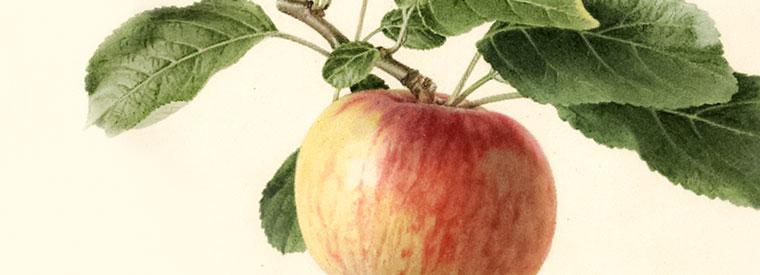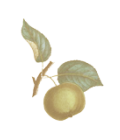From the founding of Jamestown to the time of Washington and Jefferson, every plantation owner made cider, drank cider, and bragged about his cider.

Fruit
MCINTOSH was discovered in 1796 by John McIntosh near Dundela, Dundas County, Ontario, Canada, and was propagated by Allan McIntosh. It was introduced and named in 1870. Medium to large in size, the pale-yellow skin is flushed and striped deep, bright, red and covered with a bloom. The white flesh, sometimes-tinged red, is fine, crisp and tender with a subacid to sweet flavor. The tartness and spiciness of the apple has become what is known as the classic McIntosh flavor, a favorite dessert apple. The tree sets heavy crops, is self-fertile, and blooms early. It is also a good pollinator for other varieties. Because of environmental conditions, it does not grow well in some parts of Virginia. It is a vigorous tree with red new bark and dull, rough, oval leaves, with shallow indistinct serrations. McIntosh ripens in September. While "Mac" remains the standard of excellence for apples in New England, it does not grow as well in warmer climates, and often produces indifferent results in Virginia. Higher elevations help. There are offspring such as Cortland, Spartan and Empire that are more promising in Virginia.
Ripening Period
- Early Fall - September



